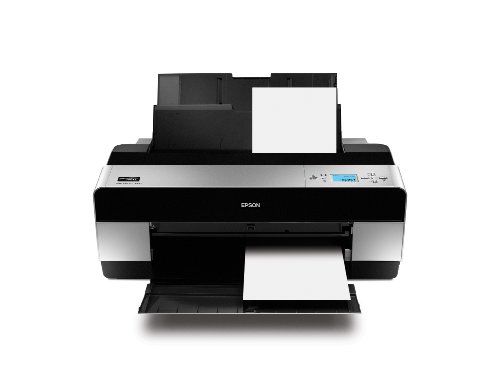

The plate was laminated the day before printing and I waited another 24 hours after printing before exposing and developing. Using these settings, I printed a test strip directly onto a plate consisting of ImagOn laminated to 0.030″ polycarbonate.
GUTENPRINT RIP FOR EPSON 3880 DRIVER
The results shown below are from the Epson driver with the following settings: Factors that impact dot gain and banding are paper thickness, platen gap, and drying time per print head pass.Īfter examining many test prints under a loupe, I finally arrived as some settings that seem like a decent starting point. Factors that impact density include choice of ink, print resolution, print speed, and the color density setting in the advanced media control options. My goals were to figure out sufficient dot density while avoiding excessive dot gain and banding. Last night I focused my efforts on the first two approaches, with my first test using the Epson printer driver at 720dpi. This means that each pixel in Photoshop will need to correspond to a handful of pixels in the printer. The other downside is resolution – the printer only has a limited ability to adjust drop size, so gray levels will still need to generated by some amount of dithering. As with the Photoshop diffusion dither, one has to guard against additional dithering in the printer driver and RIP. A stochastic screen layer has a uniform dot density across the value scale, and uses gray levels or even colored inks to adjust the value. This can have the impact of reducing resolution in the lighter shades. In the first three approaches, the density of dots decreases as the image gets lighter. The goal is to more accurately mimic the effect of an aquatint screen. I describe this approach in my earlier post. One can also eliminate any print-time processing by using a driver like GutenPrint. One can reduce this effect somewhat by choosing bitmap resolutions that are power-or-2 factors of the printer’s resolution. In practice, it can generate a lower quality dither on the plate because the dithered image from Photoshop may get dithered again in the printer driver or RIP.

Conceptually this is similar to the algorithm in the printer driver and the RIP.

In this approach, a grayscale image is converted to a bitmap using Photoshop’s diffusion dither. I’ve also found that the Epson driver seems to generate a smoother dither. The downside of this approach is that it involves a lot of experimentation to get the RIP configured correctly. One can use a 3rd party RIP like QuadToneRip to generate a maximum resolution dither pattern. This can lead to a grainy image in the matrix. Some printers like the Epson 3880 limit black-only mode to lower resolutions. If your printer driver has a black-only mode, this is one of the best approaches because the dither can be accomplished at any of the printer’s native resolutions. In this approach, a gray scale image is converted to a dither pattern of solid black dots in the manufacturer’s printer driver. I am currently aware of four approaches for incorporating the aquatint into the inkjet output: My goal was to figure out the right printer settings and workflow in order to print directly to ImagOn plates, bypassing the need for transparencies and eliminating the dedicated aquatint exposure.Īs I mentioned in my earlier post, it is possible to incorporate an aquatint-like structure into the image to provide the small ink wells that prevent an open bite in the dark areas. This is way too many test strips, but it seems like there are a million variables to explore.


 0 kommentar(er)
0 kommentar(er)
